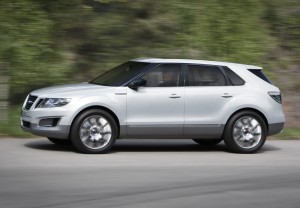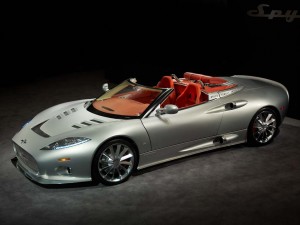
Saab hopes to relaunch production of the 9-3 and new 9-5 in a few weeks, while launching the 9-4X crossover soon afterwards.
Dutch-based Spyker Cars has completed its once seemingly improbably bid to purchase the long-troubled Swedish automaker Saab Cars.
The deal, tenatively approved last month, saves Saab from the automotive rubbish heap. Its long-time parent, General Motors, decided to abandon the brand prior to last year’s bankrupty reorganization, but after one proposed sale collapsed, GM began taking steps to close Saab until it a last-minute bid by Spyker, which until now has produced only a small number of high-priced sports cars.
Nonetheless, GM will retain strong ties to its former subsidiary, providing parts, powertrains and platforms for two critical models. Longer-term, however, Saab may seek out other partners, said CEO Jan Ake Jonsson, as it moves to develop additional products, such as the next-generation 9-3 sedan. Jonsson also revealed that the maker is considering an even smaller model that would be based on the entry-level Saab 9-2.
“As of today, our focus will be on getting back in business,” said Jonsson, speaking to reporters from Sweden during a Tuesday conference call. He noted that as GM prepared to liquidate the brand, Saab could no longer get the parts it needed to keep its assembly lines going, despite demand for the all-new 2010 9-5 sedan.
Saving Saab involved “three months of working literally day and night,” noted Victor Muller, the one-time Dutch lawyer who decided to get into the automotive business. In 1999, he introduced the first of several models bearing the Spyker nameplate, reviving a once-heralded Netherlands brand that had gone out of business in 1925.

Until now, Spyker's total sales -- for products like the Aileron Spyder, shown here -- have run into the low 100s.
The Spyker bid, first announced in December, teamed Muller and Viktor Antonov, a controversial Russian investor who GM officials made clear they weren’t interested in doing business with. After his first offer was rejected, Muller went scrambling for other sources of cash, ultimately completing the deal with the help of the European Investment Bank. With a guarantee from the Swedish government, the EIB is lending the new Saab-Spyker $550 million.
GM will receive $74 million in cash, a fraction of what it paid for Saab in the first place, along with $326 million in preferred stock that it can redeem after 2013. Neither seller nor buyer has revealed the details of what GM officials have described as a “third component” of the purchase agreement.
The most immediate challenge for the new owners is getting Saab assembly lines running again, something Jonsson said will take “several weeks.” The maker is in short supply of the new 9-5, which has won some of the best preliminary reviews scored by any new Saab in recent years. In the coming months, those plants will also begin production of the new 9-4X crossover-utility vehicle.
Both products were developed with the close cooperation of General Motors. And the U.S. maker will provide Saab with much of the components needed by those vehicles, notably including their powertrains.
“In the near-term, we will be dependent on General Motors,” acknowledged Jonsson. “You don’t change (vehicle) architectures overnight, or a powertrain,” but he also noted that, “We have the flexibility to go outside GM if we so decide.
That may very well happen, he suggested, when it comes time to develop the next-generation Saab 9-3, which currently also is based on a GM platform. According to the new management team, they have already been approached by other automakers interested in forming alliances with the newly-independent Dutch-Swedish Saab-Spyker.
There are plenty of skeptics who question Saab-Spyker’s viability, even with the European Investment Bank’s loan. And, indeed, the $550 million doesn’t provide much more than basic operating cash.
In today’s hotly competitive global auto market, even three models aren’t much of a base. And Jonsson and Muller acknowledged they’re already looking at their options
“We’re thinking about an entry-level subcompact, along the lines of the old 9-2,” revealed Muller. Suggesting it would “lead to a better result on the bottom line,” the Dutch entrepreneur says “We would love it but would first have to go out…and fund it.” But addng a note of confidence, Muller stressed that there is “a more than likely chance” that Saab will be able to follow through on the 9-2 project.
Saab has seen a steady decline in sales, in recent years, and critics have often faulted GM for failing to restore the quirky and distinctive design elements that once earned the Swedish maker a loyal, if small, following.
To succeed, suggested Jonsson, the new company – which will also include Spyker’s $200,000-plus sports cars – will have to tap into some “independent thinking…based on our Swedishness and our aircraft heritage.”
